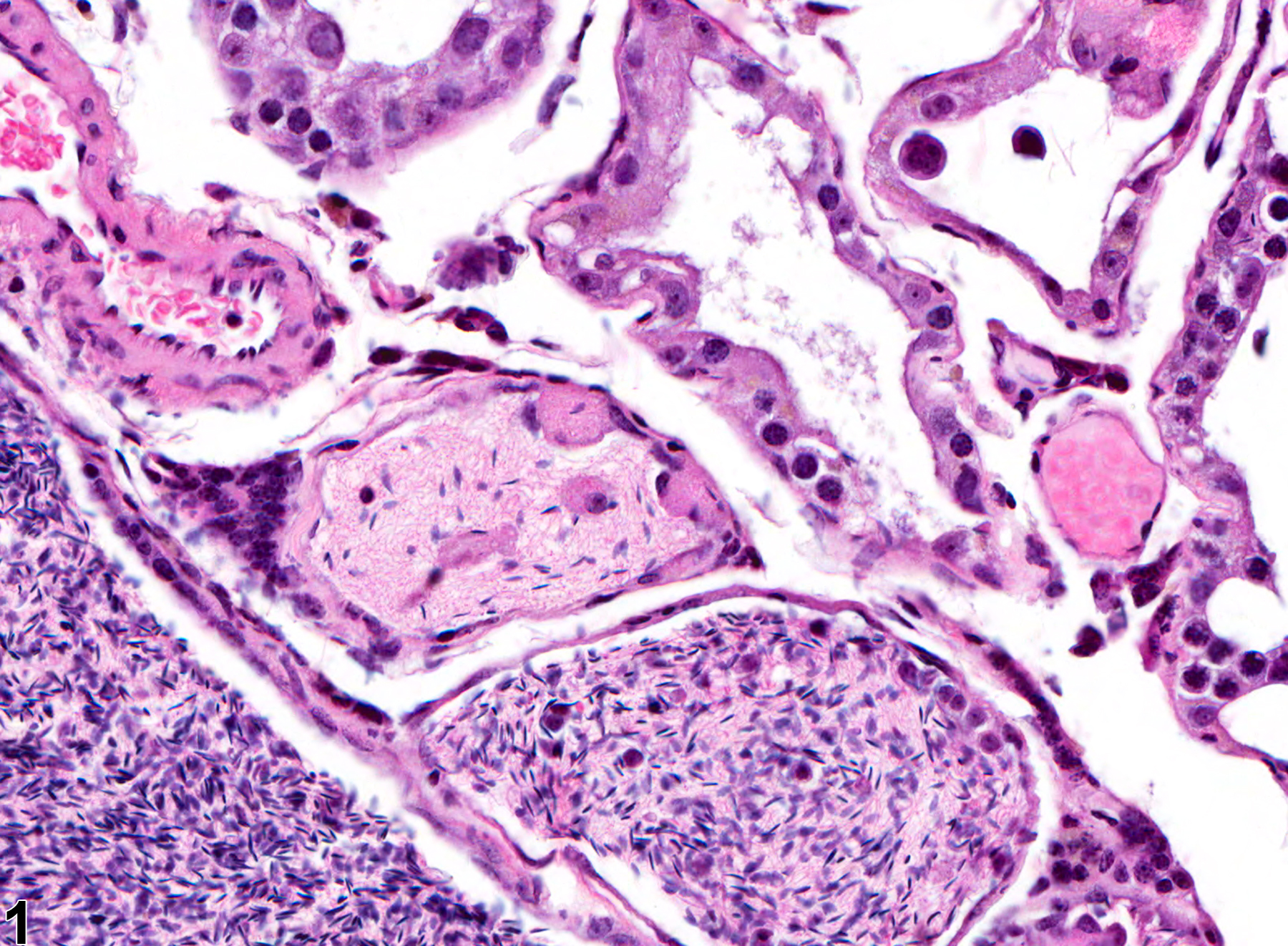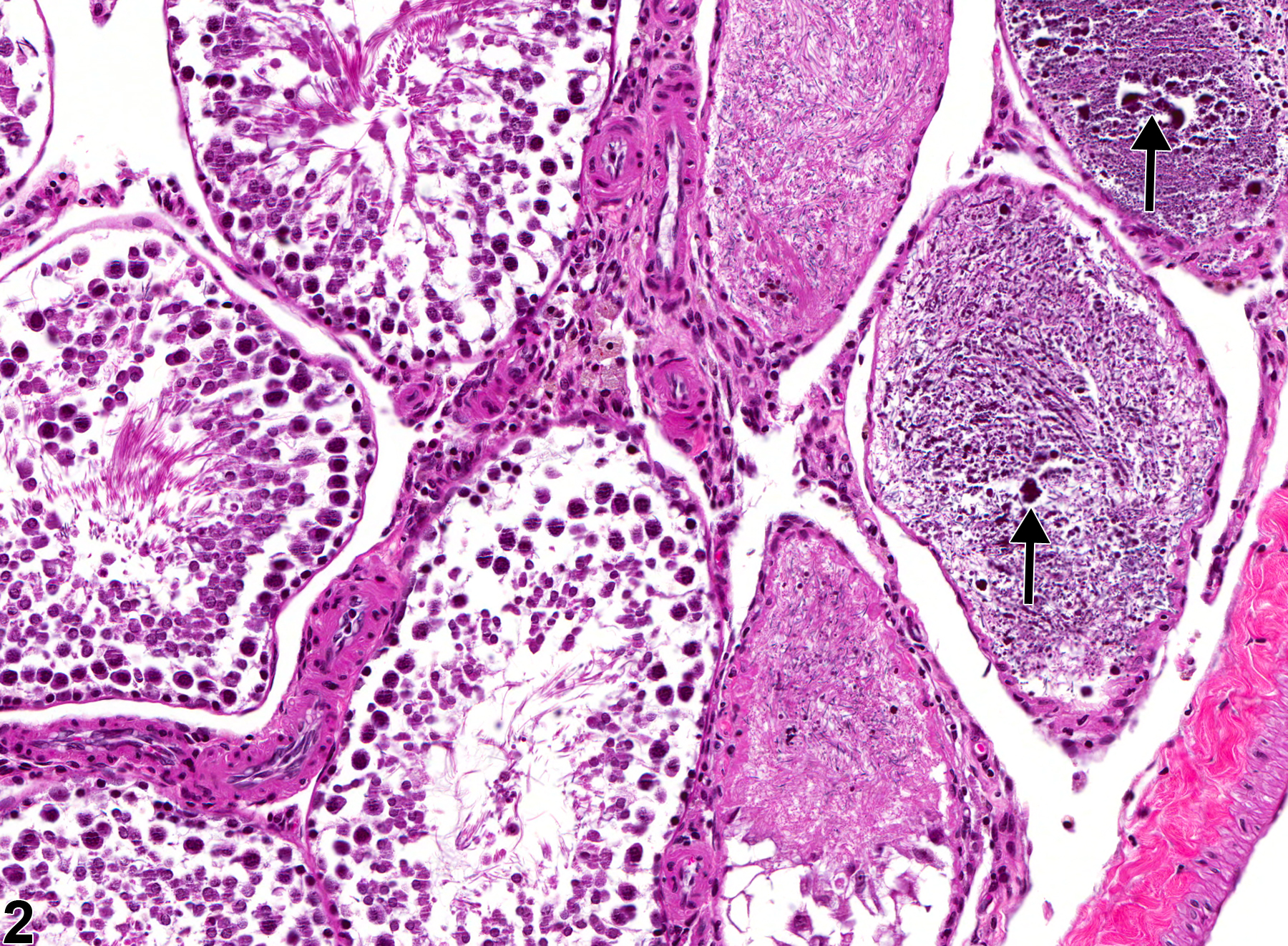Reproductive System, Male
Testis - Sperm Stasis
Narrative
Comment:
Sperm stasis results from impaction of spermatozoa in a seminiferous tubule or rete testis duct. It is generally seen within an atrophic tubule, and the impacted sperm often become mineralized (Figure 2, arrows). Sperm stasis is distinguished from a spermatocele by the smaller size of the tubule (in sperm stasis the tubule is less than twice the diameter of a normal tubule or duct) and from a sperm granuloma by the absence of an inflammatory response. Affected tubules are often located close to the rete. Sperm stasis is a common age-associated incidental finding that accompanies tubular degeneration and atrophy.
Recommendations:
Sperm stasis should not be recorded or documented unless it is a prominent finding that occurs independent of germ cell degeneration or germinal epithelial atrophy. When a diagnosis is warranted, it should be given a severity grade, and bilaterality should be included in the diagnosis when present.

Testis - Sperm stasis in a male B6C3F1 mouse from a chronic study. Sperm stasis in a testicular tubule.



